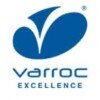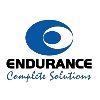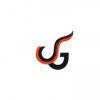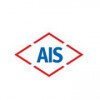Filter interviews by
Allied Nippon Graduate Engineer Trainee (Get) Interview Questions and Answers
Allied Nippon Graduate Engineer Trainee (Get) Interview Experiences
1 interview found

(1 Question)
- Q1. Tell me about yourself what is two stroke and 4 stroke engine what is punching and blanking
- Ans.
Two-stroke and four-stroke engines are types of internal combustion engines. Punching and blanking are metal forming processes.
Two-stroke engine: Combustion occurs in every revolution of the crankshaft. It has fewer parts and is lighter but less efficient than a four-stroke engine.
Four-stroke engine: Combustion occurs every two revolutions of the crankshaft. It has more parts and is heavier but more efficient than a tw...
(1 Question)
- Q1. Tell me about yourself
- Ans.
I am a recent graduate with a degree in engineering. I have a strong passion for problem-solving and a desire to learn and grow in the field.
Recent graduate with a degree in engineering
Passionate about problem-solving
Eager to learn and grow in the field
Interview Preparation Tips
Top trending discussions






Interview questions from similar companies

Interview Questionnaire
1 Question
- Q1. Related to motor, degree projects, basic electriclas

Graduate Engineer Trainee (Get) Interview Questions & Answers
Motherson Automotive Technologies and Engineeringposted on 20 Nov 2021
I applied via Campus Placement and was interviewed before Nov 2020. There were 4 interview rounds.
Interview Questionnaire
1 Question
- Q1. 1. Introduce about yourself 2. Explain about your project done during your academics. 3. Tell me about your family background. 4. Technical questions regarding programming languages ( C, C++, Python, PL...
Interview Preparation Tips

Graduate Engineer Trainee (Get) Interview Questions & Answers
Varroc Groupposted on 10 Jun 2021
Interview Questionnaire
1 Question
- Q1. More oriented to circuits and practical aspects of microcontroller.

Graduate Engineer Trainee (Get) Interview Questions & Answers
Hitachi Astemoposted on 7 Apr 2022
I applied via Referral and was interviewed before Apr 2021. There were 2 interview rounds.
(2 Questions)
- Q1. Tell me about yourself
- Ans.
I am a recent graduate with a degree in engineering. I have a strong passion for problem-solving and a desire to learn and grow in the field.
Recent graduate with a degree in engineering
Passionate about problem-solving
Eager to learn and grow in the field
- Q2. Any backlogs?? And favorite subjects
- Ans.
No backlogs. Favorite subjects are Mathematics and Physics.
No, I do not have any backlogs.
My favorite subjects are Mathematics and Physics.
I have always been interested in solving complex problems and these subjects provide me with the necessary tools to do so.
(1 Question)
- Q1. Technical questions about your previous dept
Interview Preparation Tips

Graduate Engineer Trainee (Get) Interview Questions & Answers
Krishna Marutiposted on 19 Dec 2020
Interview Questionnaire
2 Questions
- Q1. What can you do for our company.?
- Q2. The ans. Is... I will do best man Power handling, maintain 5s, perform kaizen, and take 3M.

Graduate Engineer Trainee (Get) Interview Questions & Answers
Subrosposted on 25 Feb 2015
Interview Questionnaire
2 Questions
- Q1. Questions asked were from Refrigeration and Air conditioning
- Q2. Questions asked were from Future plan, project
Interview Preparation Tips
Experience: Resume short listing was done on the basis of cgpa>7.Mine was 7.26.
Round: Test
Experience: Only Technical - Small descriptive type of questions
Tips: I prepared fundamentals of FM, RAC, HMT for test.
Duration: 90 minutes
Round: Technical Interview
Experience: Duration of the interview was 35 mins.
Round: HR Interview
Experience: Interview was over the Skype.There were two Technical persons and One HR person in the panel .
Tips: .Prepare Refrigeration cycles thoroughly
General Tips: I think I got selected because I answered every technical questions and I started preparing two weeks earlier before the placements.
Skill Tips: Prepare Refrigeration cycles and fundamentals thoroughly.They looking for Thermal background
Skills: Fundamental knowledge of core subjects
College Name: IIT MADRAS

Interview Preparation Tips
Experience: THERMAL ENGINEERING QUESTIONS, LIKE ICE ,R&AC. INTERVIEW WAS VERY TECHNICAL. GD WAS VERY EASY. APTITUDE WAS VERY NICE
Round: HR Interview
Experience: GENERAL HR QUESTIONS.
General Tips: ALL THE BEST.
College Name: NIT WARANGAL

Graduate Engineer Trainee (Get) Interview Questions & Answers
Subrosposted on 5 Apr 2015
Interview Questionnaire
6 Questions
- Q1. Draw saturation curve, and explain it
- Ans.
A saturation curve shows the relationship between the concentration of a substance and its ability to bind to a receptor.
The curve starts at zero binding when there is no substance present.
As the concentration of the substance increases, more receptors become occupied and the binding increases.
Eventually, all the receptors become occupied and the binding reaches a maximum, which is the saturation point.
Further increase...
- Q2. Is there any instrument which can measure entropy, explanation?
- Ans.
Yes, entropy can be measured using instruments such as calorimeters and thermometers.
Entropy can be measured indirectly through changes in temperature or heat flow.
Calorimeters can measure the heat released or absorbed during a reaction, which can be used to calculate entropy.
Thermometers can measure changes in temperature, which can also be used to calculate entropy.
Entropy can also be estimated using statistical meth...
- Q3. Define heat and entrophy
- Ans.
Heat is the transfer of energy from one body to another due to a temperature difference. Entropy is a measure of disorder or randomness.
Heat is a form of energy that flows from hotter to cooler objects
Entropy is a measure of the number of ways in which the energy of a system can be distributed among its particles
Heat can be transferred through conduction, convection, and radiation
Entropy always increases in a closed sy...
- Q4. 3-4 question on project
- Q5. Interested in higher studies or not
- Ans.
Yes, I am interested in pursuing higher studies.
I believe that higher education can provide me with more opportunities for personal and professional growth.
I am considering pursuing a master's degree in my field of work.
I have already started researching different programs and universities.
I am also exploring options for scholarships and financial aid.
I am excited about the prospect of continuing my education and expan
- Q6. General HR ques
Interview Preparation Tips
Experience: only technical question, mainly theoretical and very less numericals.
Tips: focus on RAC, HMT, FM, material science and manufacturing.
Duration: 30 minutes
Total Questions: 30
Round: Technical Interview
Experience: duration of interview was 15min
Tips: prepare thermal engg subjects, and explanation regarding your project.it would be beneficial if you are having thermal engg. based project in final year.
Round: HR Interview
Experience: duration was 10 min.
Skills: concepts of thermal engg. subjects
College Name: NIT JAIPUR

Graduate Engineer Trainee (Get) Interview Questions & Answers
Varroc Groupposted on 26 May 2021
I applied via Campus Placement and was interviewed before May 2020. There were 4 interview rounds.
Interview Questionnaire
1 Question
- Q1. Favorite subject, basics of electronics, engineering projects
Interview Preparation Tips
Prepare one subject in case they ask you about your favorite subject you should be able to answer.
Allied Nippon Interview FAQs
Tell us how to improve this page.
Allied Nippon Interviews By Designations
- Allied Nippon Turner Interview Questions
- Allied Nippon Executive Assistant Interview Questions
- Allied Nippon Accounts Officer Interview Questions
- Allied Nippon Graduate Engineer Trainee (Get) Interview Questions
- Allied Nippon Production Engineer Interview Questions
- Allied Nippon Mechanical Engineer Interview Questions
- Allied Nippon Lathe Machine Operator Interview Questions
- Allied Nippon Fitter and Turner Interview Questions
- Show more
Interview Questions for Popular Designations
- Graduate Apprentice Trainee Interview Questions
- Graduate Trainee Interview Questions
- Graduate Apprenticeship Trainee Interview Questions
- Graduate Engineer Interview Questions
- Production Graduate Engineer Trainee Interview Questions
- Graduate Student Interview Questions
- Graduate Apprentice Interview Questions
- Post Graduate Engineer Trainee [pget] Interview Questions
- Show more
Graduate Engineer Trainee (Get) Interview Questions from Similar Companies
Allied Nippon Graduate Engineer Trainee (Get) Reviews and Ratings
based on 4 reviews
Rating in categories
|
Engineer
25
salaries
| ₹2.5 L/yr - ₹5.2 L/yr |
|
Production Engineer
24
salaries
| ₹3.2 L/yr - ₹5.2 L/yr |
|
Senior Engineer
22
salaries
| ₹3.5 L/yr - ₹5.3 L/yr |
|
Assistant Manager
20
salaries
| ₹5.2 L/yr - ₹9.8 L/yr |
|
HR Executive
11
salaries
| ₹3 L/yr - ₹4 L/yr |

JBM Group

Subros

Varroc Group

Endurance Technologies
- Home >
- Interviews >
- Allied Nippon Interview Questions >
- Allied Nippon Graduate Engineer Trainee (Get) Interview Questions












